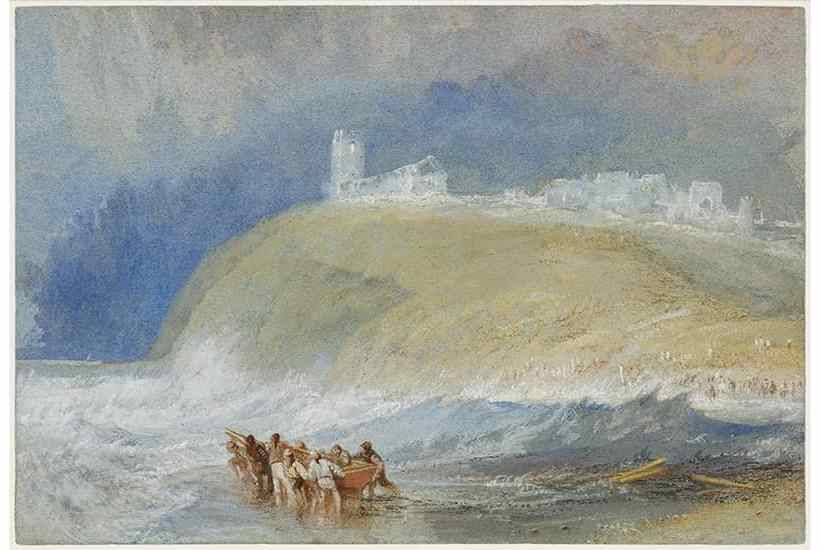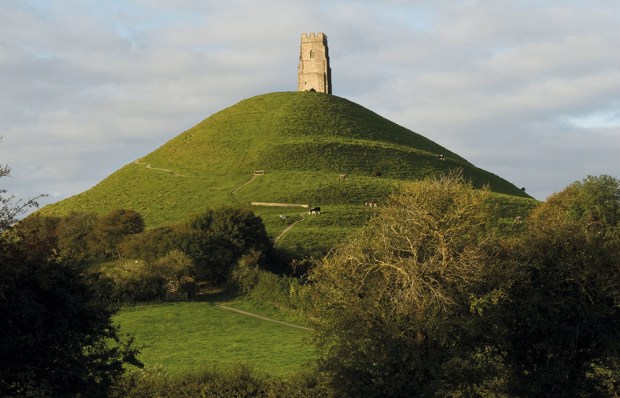Take a walk in the English countryside and you get the impression that little has changed. The churches and farmhouses, the hedgerows and footpaths – much of this has been preserved for centuries. However, as Matthew Green argues in Shadowlands, there is also a history of lost towns and abandoned villages hidden beneath the tranquil surface. His book tells the stories of eight such places, as well as the disasters that led to their disappearance, offering a phantom history of Britain through vanished settlements and forgotten occupants.
Shadowlands begins with the Neolithic village of Skara Brae in Orkney that was buried in sand several thousand years ago. It ends with the rural community of Capel Celyn, who lived in a remote valley in north-west Wales until their homes were submerged in 1956 to provide a reservoir for the people of Liverpool. In between, Green discusses river ports becoming silted over and coastal towns sinking into the sea, as well as villages emptied by plague or relocated by war.
He does an excellent job of placing these locations in a broader context, incorporating geography, economics and urban planning. We learn how the medieval arms industry powered the rise and fall of various Welsh border towns, and how the profits from the wine trade with Gascony were behind the wealth of the Cinque Ports. At the same time, he brings this material to life with tales of pirates and poets, soldiers and kings, as well as testimonies from the helpless inhabitants of vanishing homes.
The book also debates the meaning of ruins and the preservation of the past. Lost places can house any number of human longings, because once perished they become sites of creative possibility. Also, a ruined building can be much more impressive than one still standing, as we reconstruct the vanished splendour in our minds. For instance, the lost city of Dunwich has enjoyed more attention from writers and artists than any of its neighbours on the Suffolk coast precisely because it was claimed by the sea. Absence has a special presence of its own, as Green writes:
Dunwich was a magnet for Victorian dreamers. There was something in the air: a fugitive odour of loss – eerie, gentle and strangely intoxicating. As more of the city disappeared into the sea, the more it grew in the public imagination.
The Victorians were especially keen on places that evoked the distant past. In the 18th century, the islands of St Kilda were among the most isolated in Europe, their illiterate inhabitants living off a diet of fulmars and seaweed, without any money or possessions. Travel writers would cross the Outer Hebrides to visit this lonely spot, seeking proof for Enlightenment theories about mankind’s natural state. By the 19th century, however, steamers were taking tourists on cruises around the islands, while the locals exaggerated how primitive their lives were in order to earn cash. They would rush on to the tourists’ yachts and attempt to eat their coal, or respond with alarm when they glimpsed themselves in a mirror, even though both these items could be found on St Kilda. The past had become a performance to entertain the present, and in due course that present – the mixed pressures of tourism, war and changing agricultural practices – led to the islands being abandoned in 1930.
Green blends his historical account with nature and travel writing when he describes visiting the sites of these former settlements. Compared with the historical material, the personal passages are often flat, either because too little has remained to justify the visit, or because his attraction to such places remains vague. Of course, there was no need to turn the book into a memoir; writers such as Robert Macfarlane and Olivia Laing (obvious models here) mostly keep their own lives off the page. But Green suggests that these journeys helped him overcome the death of his father and the end of his marriage: ‘Having toured and meditated upon so many ruins I had somehow emerged less of a ruin myself.’
The book concludes with a warning about how many more British settlements could become shadowlands this century. As Green makes clear, the seeming permanence of our landscape is an illusion: these islands are fragile, and protecting them requires constant vigilance. That said, what I ended up feeling was not so much anxious but hopeful, because so much more has lasted than has been lost. Besides, the book shows that even those places which have vanished can still live on in the memory, and that nowhere completely disappears as long as we keep telling its story.
Got something to add? Join the discussion and comment below.
Get 10 issues for just $10
Subscribe to The Spectator Australia today for the next 10 magazine issues, plus full online access, for just $10.
You might disagree with half of it, but you’ll enjoy reading all of it. Try your first month for free, then just $2 a week for the remainder of your first year.














Comments
Don't miss out
Join the conversation with other Spectator Australia readers. Subscribe to leave a comment.
SUBSCRIBEAlready a subscriber? Log in